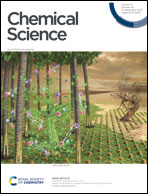Metal-free reductive desulfurization of C-sp3-substituted thiols using phosphite catalysis†
Abstract
Phosphines and phosphites are critical tools for non-metal desulfurative methodologies due to the strength of the P![[double bond, length as m-dash]](https://www.rsc.org/images/entities/char_e001.gif) S bond. An overarching premise in these methods has been that stoichiometric (or excess) P(III) reagent is required for reactivity. Despite decades of research, a desulfurative process that is catalytic in phosphine/phosphite has not been reported. Here, we report the successful merging of two thermal radical processes: the desulfurization of unactivated and activated alkyl thiols and the reduction of P(V) = S to P(III) by reaction with a silyl radical species. We employ catalytic trimethyl phosphite, catalytic azo-bis(cyclohexyl)nitrile, and two equivalents of tris(trimethylsilyl)silane as the stoichiometric reductant and sulfur atom scavenger. This method is tolerant of common organic functional groups and affords products in good to excellent yields.
S bond. An overarching premise in these methods has been that stoichiometric (or excess) P(III) reagent is required for reactivity. Despite decades of research, a desulfurative process that is catalytic in phosphine/phosphite has not been reported. Here, we report the successful merging of two thermal radical processes: the desulfurization of unactivated and activated alkyl thiols and the reduction of P(V) = S to P(III) by reaction with a silyl radical species. We employ catalytic trimethyl phosphite, catalytic azo-bis(cyclohexyl)nitrile, and two equivalents of tris(trimethylsilyl)silane as the stoichiometric reductant and sulfur atom scavenger. This method is tolerant of common organic functional groups and affords products in good to excellent yields.



 Please wait while we load your content...
Please wait while we load your content...